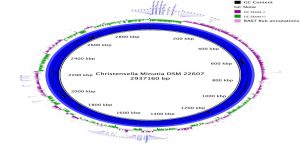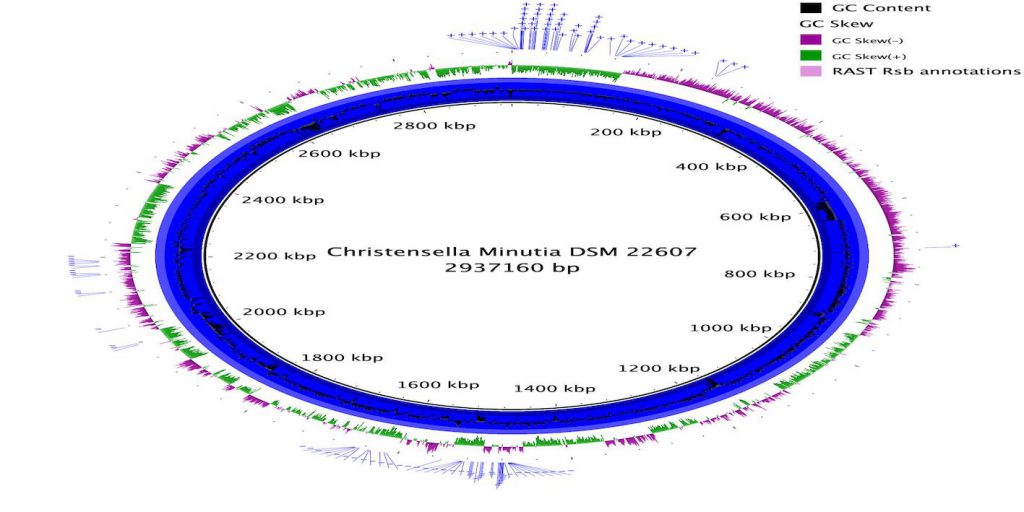 So way back in 2014 a really interesting paper came out about a family of bacteria called Christensenellaceae, which was found to be the most heritable group in the human gut microbiome. Furthermore this group (represented by Christensenella minuta) was furthermore associated with low BMI. Most intriguingly, mouse work demonstrated that the injection of cultured C. minuta into germ-free mice prevented the onset of obesity after a fecal transplant to the mice from high BMI individuals. Latter work (summarized here) has shown that C. minuta is associated with many other components of human health including longevity, obesity, and inflammatory bowel disease. At the time that 2014 paper came out, there were no available genomes from this group. We quickly ordered the strain from DSMZ, sequenced the genome and tossed it into NCBI for public use. At the time, I made the observation that there seemed to be an unusual expansion of a bunch of transporter genes in this organism. We did some preliminary analysis… and then sort of dropped the project. Only 6 years later, we’ve finally published a short paper “Draft Genome Analysis of Christensenella minuta DSM 22607, exhibiting an unusual expansion of transporter homologs of unknown function” expanding our observations. We still don’t know what’s going on… but there’s some thought that these genes might actually be involved in quorum sensing and maybe that’s how C. minuta helps structure the gut microbial community.
So way back in 2014 a really interesting paper came out about a family of bacteria called Christensenellaceae, which was found to be the most heritable group in the human gut microbiome. Furthermore this group (represented by Christensenella minuta) was furthermore associated with low BMI. Most intriguingly, mouse work demonstrated that the injection of cultured C. minuta into germ-free mice prevented the onset of obesity after a fecal transplant to the mice from high BMI individuals. Latter work (summarized here) has shown that C. minuta is associated with many other components of human health including longevity, obesity, and inflammatory bowel disease. At the time that 2014 paper came out, there were no available genomes from this group. We quickly ordered the strain from DSMZ, sequenced the genome and tossed it into NCBI for public use. At the time, I made the observation that there seemed to be an unusual expansion of a bunch of transporter genes in this organism. We did some preliminary analysis… and then sort of dropped the project. Only 6 years later, we’ve finally published a short paper “Draft Genome Analysis of Christensenella minuta DSM 22607, exhibiting an unusual expansion of transporter homologs of unknown function” expanding our observations. We still don’t know what’s going on… but there’s some thought that these genes might actually be involved in quorum sensing and maybe that’s how C. minuta helps structure the gut microbial community.
Here’s the Abstract:
Christensenella minuta was first formally described in 2012 as a member of a novel species, genus, and proposed family of Christensenellaceae. C. minuta was later shown in one study to be part of the most heritable taxonomic group in the human gut microbiome and to be enriched in people with low body mass index (BMI). Mouse work demonstrated that injection of cultured C. minuta into germ-free mice prevented the onset of obesity after a fecal transplant to the mice from high BMI individuals. Here we describe the genome sequence of C. minuta DSM 22607. Examination and analysis of the annotation revealed an unusually high number of genes predicted to be involved in carbohydrate metabolism, many of which were multiple homologs of RbsA, RbsB and RbsC, which together make up the Ribose ABC Transport System. These genes may be also involved in quorum sensing which could potentially relate to the importance of C. minuta in the gut microbiome.

Intriguing!!!